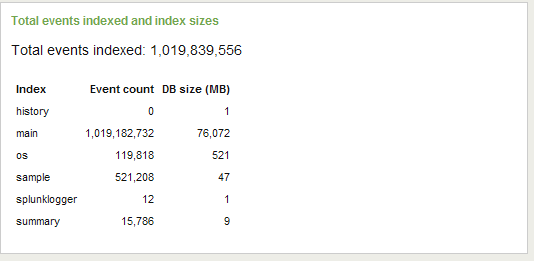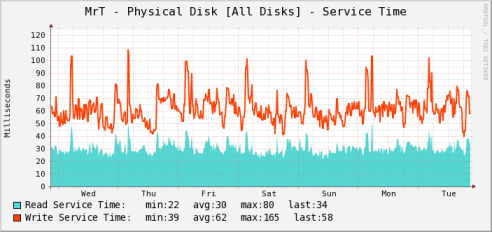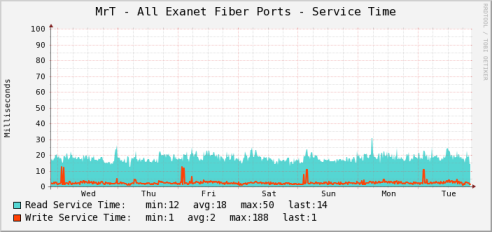Just got done with an evaluation of a new product on the market, a Cache-A Prime Cache tape drive. It is based off the same technology that the Quantum Superloader 3A. Quantum as a company hasn’t been doing too hot recently, I was told that they basically let go of the entire team responsible for developing the software for the Superloader 3A. Cache-A then went in and either bought or at least licensed the software to continue development at their company. The first product was released in late June 2009, the Prime Cache, which is a single LTO-4 tape drive hooked up to a small computer running Fedora 10. They have a fairly easy to use UI that is web based.
You can either FTP or use CIFS to interface with the device to upload files. It stages the files on a local internal disk which they call the VTAPE, once the file is uploaded to the share then the system automatically sends it to tape. Eventually it will support NFS as well. It does have the ability to mount remote NFS/CIFS shares and back them up directly though there are some limitations in the current software release. I was unable to get it to see any files on our main NAS cluster which runs Samba for CIFS, and was unable to mount NFS volumes it depends currently on another software package(forgot the name) which broadcasts the available NFS exports to the network for the device to see them, no ability yet to manually input a NFS server/mount point to go to.
I like the concept because being able to use FTP or even smbclient on the command line to be able to tie directly into a tape drive from backup scripts is real handy for me. Add to that pretty much any system on the network being able to push files to the tape without having to go through special backup software has it’s appeals as well. Most of our data that needs to be backed up is spread out all over the place, and I have scripts that gathers the paths and file names of the files that need backing up. Our MySQL database backups are also heavily scripted as well involving snapshots from the SAN etc. So being able to put a few lines of code in the script to pass the files along to the tape is nice.
The system is quite new so has some bugs, and some things aren’t implimented yet, like the ability to delete files directly from the tape or erase/format the tape without using the WebUI, that is coming(along with an API), though no ETA. The device retails for about $7k I believe, which is roughly 1/2 the cost of the SuperLoader 3A. Though this is just one tape drive, no autoloader yet. Though it is LTO-4 and the SuperLoader 3A is LTO-3(with no expectations of it ever being able to get to be LTO-4).
I’ll certainly be following this product/company pretty closely in the future myself as I really like the way they are going, this is certainly a very innovative product, other than the SuperLoader I haven’t seen any other product like it on the market.


